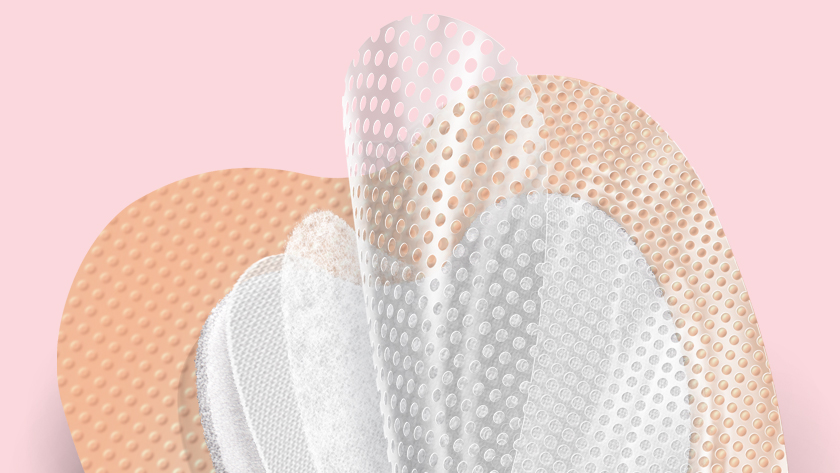Q&A with Dr. Kevin Woo and Jerra-Marie Sullivan: Multi-layer foam dressings
See how a change in advanced wound care affected pressure injuries rates.

- Please describe your clinical study.
- Dr. Woo: This two-year prospective study compared the rate of pressure injuries in January to March 2016, when adhesive foam dressings were used, to the same period in 2017, when Optifoam Gentle was introduced.
- Ms. Sullivan: With the goal of providing patients quality advanced wound-care products, our Systemwide Value Analysis Team interviewed six companies and reviewed their product lines, educational opportunities and sales representative support. We narrowed our choices to two companies and conducted product evaluations. We selected Medline and began implementing its products in our CCUs in July 2016. After using the products for a year, a study was conducted in our three community hospitals to learn what effect changing to Optifoam Gentle had on pressure injury rates. Pressure injury protocol varied among our hospitals. Two of our hospitals based their protocol on the Braden Scale, and the other hospital used a prevention dressing protocol for ICU patients. In 2016, the pressure injury rate in two hospitals was 0.32 percent and zero percent in the other hospital. In 2017, all three hospitals had a zero percent pressure injury rate — and have since maintained that rate
- Did your findings surprise you?
- Ms. Sullivan: Yes and no. Two of our hospitals had used Medline products before the study. Medline was a totally new product line at one hospital.
- Dr. Woo: The findings validated our understanding that a multi-layer foam dressing is better than other products for pressure injury prevention. The material is unique in that it can compress and redistribute pressure and shear across the dressing and beyond.
- Did you get feedback from clinicians?
- Dr. Woo: The nurses love Optifoam dressings because they stay on the skin for the desired time. It is easy to use and remove. For prophylactic use, we lift up the dressing to evaluate the skin and dressing to determine if there is a pressure problem. If the skin is intact and there are no issues with infection or sterility, we don’t need to change the dressing. Optifoam Gentle works well and continues to stay on the skin. Optifoam Gentle is thick and cushy, and nurses commented on how comfortable it is to apply.
- What are the benefits of using multi-layer foam dressings to prevent injuries and ulcers?
- Ms. Sullivan: Multi-layer foam dressings help disperse pressure in the sacral area. Using the dressing along with a pressure injury prevention protocol helps prevent or treat patients’ skin breakdown and gives clinicians another tool to prevent and treat pressure injuries.
- Dr. Woo: There is convincing data that suggests this is a good strategy and should be adopted. We use the dressing prophylactically for bony prominences for patients at risk for developing pressure injuries. For pressure-injury prevention, it’s not a single intervention approach but a bundled approach — and you can add multi-layer foam dressings to the bundle cost-effectively. Patients and families can do this at home. It doesn’t require specialized individuals. Wound prevention is always key because once a wound develops, it’s expensive to manage. We have yet to address the benefits of regulating the microclimate, especially in ICU settings. I think that a foam dressing is not only about pressure shear; it also has value in regulating the microclimate, including wicking away excess fluid and facilitating ventilation.
Takeaways
- This quality improvement (QI) study evaluated the incidence rate of pressure ulcers in high-risk patients in critical care areas.
- This study took place in three intensive care units and looked at 326 patients from three community-based hospitals in Massachusetts. The incidence of pressure ulcers was 0.32 percent in Q1 2016 versus zero percent in Q1 2017 after Optifoam Gentle was implemented.¹
- Multi-layer foam dressings are beneficial for pressure ulcer prevention. Benefits include cost-effective care and optimal patient outcomes.
Kevin Woo, PhD, RN, NSWOC, FAPWCA, is associate professor, Queen’s University, School of Nursing, School of Rehabilitation Therapy in Kingston, Ontario, Canada. He also is an Advanced Wound Consultant, West Park Health Center in Toronto, Ontario. He is a clinical consultant to Medline Industries.
Jerra-Marie Sullivan, RN, MSN, CWOCN, is Skin Care/Diabetes program director, Beverly Hospital, Beverly, Massachusetts, which is a member of Lahey Health. A WOC nurse for over 35 years, Sullivan has worked in acute care, home care, wound centers and long-term care. She is a clinical consultant to Medline Industries.
Reference:
- Sullivan J, Woo K. Comparing the cumulative incidence of pressure ulcers using multi-layer foam dressings in seriously ill patients: a quality improvement project. Surgical Technology International (Reprint) 2018;33:1-5.
